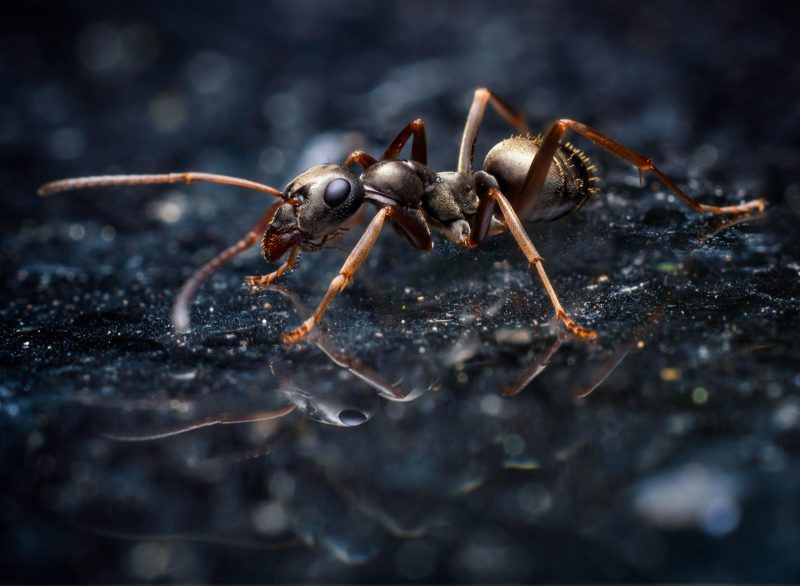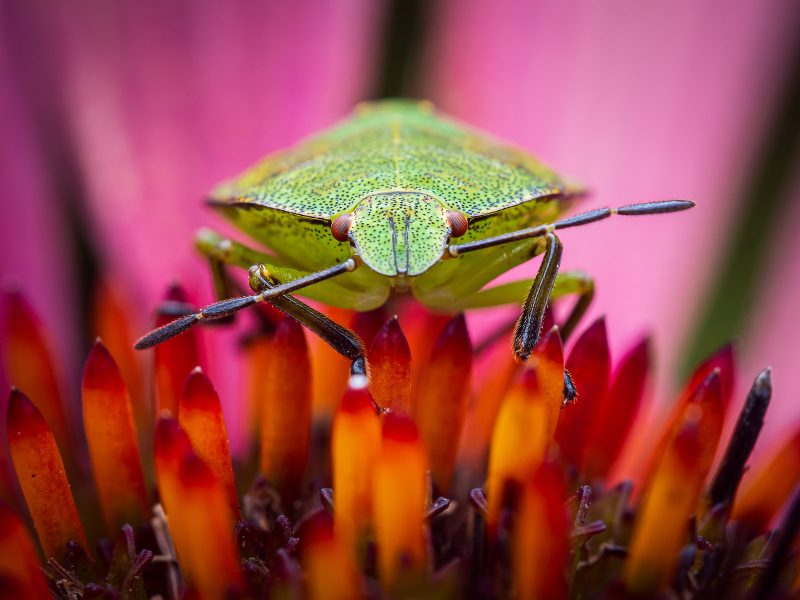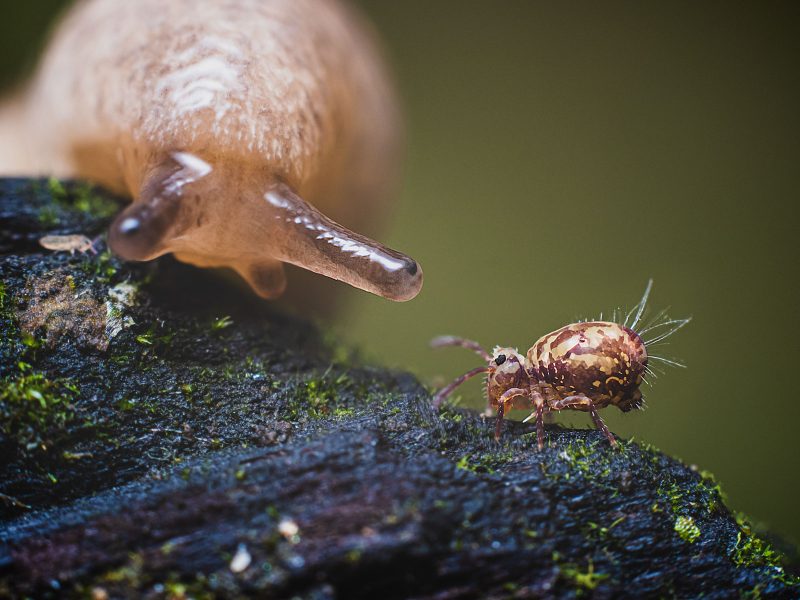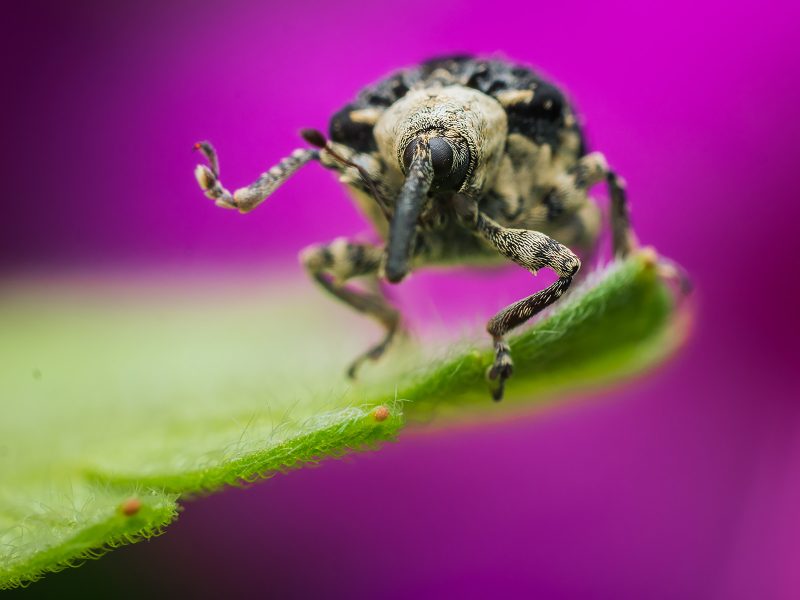Creepy Crawlies: Photography Fights the Fear Factor

The micro world is a fascinating place to explore! I believe macro photography is one of the most accessible and rewarding photography genres, and I encourage everyone to try it.
Insects are among the most popular subjects within this macro realm and, for us enthusiasts, it is easy to see why. They are fascinating and wonderfully photogenic creatures, offering us some truly amazing photography opportunities.
At the forefront of my macro photography is ethics, as they should be for everyone. There is simply no reason to harm, trap, or freeze insects. The lives of insects have more value than our images, and it is best to photograph them in situ with minimal disturbance to their habitat.
Bugs and emotions
Many people consider bugs and spiders – ‘minibeasts’ – to be frightening, or view them as pests.
There are many reasons for this perception, including the real danger presented by some of the venomous varieties that exist. Whilst this is true for many parts of the world, I live in Wales (UK) so this isn’t an issue… although I may succumb to the rainfall!
For most people, it is the unusual appearance of these minibeasts that create feelings of unease or even fright.
Spiders are especially misrepresented and are usually portrayed as something to fear. We see this each year during the “spooky season” with adornments of terrifying arachnids, potentially conditioning us to see spiders in a manner that isn’t necessarily fair to them.
Images of bugs are often shown to create a shock response, but we may be able to offer some help to our little friends in this regard.
Breaking the stigma
For those of us who appreciate insects, it may be within our photographic abilities to showcase these remarkable insects in a manner which shares our perspectives. Hopefully, we can alleviate some of the anxieties and negative viewpoints associated with these amazing beings.
Sharing images through our websites, prints, and via social media outlets, is a fantastic method to help people engage with the secret world.
My approach to photographing insects and spiders is to attempt to capture beautiful and engaging images that hold one’s attention.
My hope is that presenting minibeasts in an aesthetically pleasing manner may offer those who are nervous about bugs an opportunity to observe them safely. Eventually, they might become less anxious when a bug makes an unexpected appearance.
Bug-eye view
Typically, when we are observing insects, we are viewing them from far above. However, by selecting a low camera angle, we place both the viewer and the subject at the same level, creating engaging images that connect with the viewer.
This beautiful shield bug (below) was relaxing upon a flower that displayed harmonious colours, complimenting the tones of the insect rather nicely.
Composing the image to include the petals simultaneously shows the scale of the insect whilst maintaining some distance so the insect does not impose upon the viewer. Look at those adorable antennas – what’s not to like about this bug?
Flies are another type of insect that get a hard time, often perceived as pests and met with disdain. Their eating habits do not offer them much assistance in this regard, however, they are curial composters in our ecosystem and should therefore be praised.
Considerably like our much-adored bees, flies are also pollinators and are vital to the ecosystem; they will pollinate many plants that other insects may not visit.
I believe that if a macro photographer can help people to appreciate the intricacies and fine details presented on these essential beings, it may help to change perceptions. A fly’s compound eyes, for example, are beautiful. By utilising a shallow depth of field, we can showcase the areas which we wish to emphasise, such as these eyes.
Images that display these types of characteristics can help educate and inform people. They could even persuade people to reconsider swatting flies, and instead, encourage them back outdoors where they may continue their lives whilst helping to maintain ours.
Capturing the beauty of bugs
Each insect has captivating elements that, when seen in a photograph, can help change perceptions towards them.
Slow-moving subjects are a macro photographer’s dream, yet slugs are often considered rather unsightly. However, take a closer look and you will see their delightful eyes and quirky nature.
If you can add elements of interaction between two subjects it allows our imaginations to go further, conjuring stories and narratives.
Jumping spiders have the most incredible eyes. The large black circles reflect catchlights beautifully and create a cartoonish look, making them appear to be rather cute. Timing our moments to depict some personality can inspire the imagination of the viewer.
For many people, macro photographs are the only way that they will gaze into the eyes of a tiny being, such as this zebra jumping spider. The spider looks cute because it is gazing up at us. By including the edge of the leaf, we can give context and allow the viewer to get a sense of scale.
Portraying the very small stature of this spider will help reassure spider-nervous individuals and allow them to spend a few seconds longer looking at the photograph.
I have received many emails and messages on social media from people to have conquered their fear of spiders and bugs because of my images. It is an honour to help people, and provide a voice for these misunderstood creatures.
Some of my favourite images of insects have a comedic element. If a photograph of a bug can make a person smile, then I consider that to be a mighty achievement!
Take weevils for example. These little insects are awkward walkers, and this figwort weevil (above) is no exception. Showcasing a funny pose and set against a beautiful out-of-focus flower, this little character comes to life.
Quite often macro photography involves photographing static subjects because of the inherent difficulty in achieving critical sharpness in the correct areas. Despite this, with a lot of patience and luck, we can use movement to create characteristics.
Smile and the world will smile with you – damselflies have wonderfully expressive faces. Their bright colours and huge eyes (in relation to their size) would not look out of place in a Pixar film. This insect appears to be happy and friendly, and therefore will captivate people and hopefully place them at ease.
In conclusion
As ethical macro photographers, we are enthusiastic about our subjects, which will come across in our images.
As insect numbers continue to decline, perhaps we have the power to alter the negative perception of our little friends. Despite how scary they may look to some, imagining a world without them is far more terrifying.
















